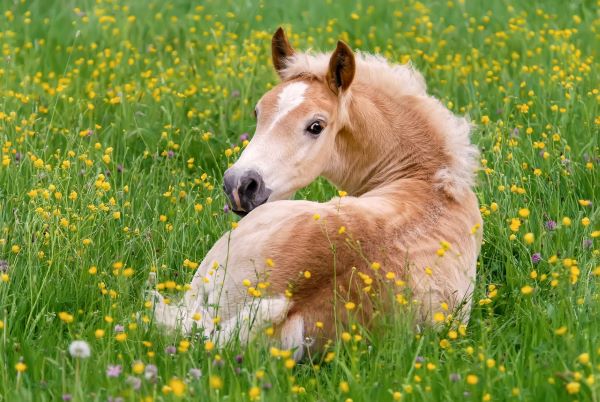The image of a pasture laden with the dainty yellow flowers known as buttercups (Ranunculus spp.) may seem picturesque, even peaceful, to some people. For horse owners, however, a proliferation of buttercups signifies pastures may be past their prime and in need of restoration.
When maintained properly, pasture can provide horses with high-quality forage for much of the year. Subjected to overgrazing or negligence, pastures lose their standing as a source of nutrition, as palatable plantlife disappears and weeds emerge. Now is the time to start thinking about weed control and management of buttercups in pastures.
Things to keep in mind:
- Test your soil. Soil fertility is a key part of successful pasture management and renovation. Apply any soil amendments, including fertilizer, lime, or other applications, based on the results of soil tests.
- Herbicide application. Late winter is the time of year to spray for buttercups and other weeds.
- Replant with grasses or clover. Removing weeds will leave bare soil that can be taken over by other undesirable plants. Pasture renovation may require seeding in late winter, early spring, and fall to reestablish cool-season grass pastures.
- Mow. While mowing is an essential part of pasture care and may prevent the spread of other weeds, it is not effective in controlling buttercups.
- Consider stocking rate. Overgrazed, damaged pastures are more susceptible to weed infiltration. Consider rotational grazing strategies and reducing stocking rates to rest and maintain pasture performance.
Contact your agricultural extension agent for advice on products and management strategies to control weeds and establish productive pastures.











